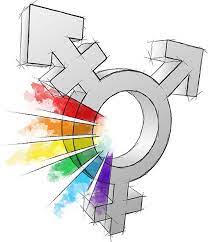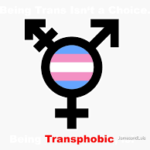The conversation around transgender issues has gained significant traction in recent years, and one topic that often comes up is the journey of physical transformation, particularly concerning breasts. For many transgender individuals, the desire for breasts is a crucial aspect of aligning their physical appearance with their gender identity. This article will delve into the world of "transgender boobs," exploring the various options available, the emotional impact, and the experiences of those who have undergone this journey.
Understanding the Basics: What Are Transgender Boobs?
Transgender boobs refer to the breasts that transgender women (those assigned male at birth but who identify as female) might seek as part of their transition. This can be an essential aspect of their gender affirmation process, helping to create a body that aligns with their identity. For some, having breasts is not just about physical appearance but also about feeling comfortable and authentic in their skin. Trans Vs GayTypes Of Hormones In Women
In the broader context of gender identity, breasts serve as significant markers that can influence how one is perceived socially. The presence of breasts can help transgender women feel more feminine and can reduce the gender dysphoria they may experience. Understanding this need is crucial for allies and society at large as it fosters a more inclusive environment.
The Journey: How Transgender Individuals Get Boobs
The journey toward obtaining breasts can vary widely among transgender individuals. Many begin by exploring hormone replacement therapy (HRT), which typically involves taking estrogen and anti-androgens. This process can lead to breast development over time, although the amount and speed of growth can differ significantly from person to person.
For others, particularly those who want a more immediate or pronounced change, surgical options like breast augmentation are the preferred route. This surgical procedure involves placing implants to create breast volume and shape, allowing individuals to achieve their desired look more quickly. Regardless of the path chosen, the journey is personal and can be influenced by various factors, including financial considerations, health, and personal comfort with the procedures.
Different Options: Surgery vs. Hormone Therapy Explained
When it comes to achieving the desired breast size, individuals often face the choice between surgery and hormone therapy. Hormone therapy is usually the first step for many transgender women, as it involves taking estrogen, which can stimulate breast growth naturally over time. For those who are patient and prefer a less invasive route, HRT may be the ideal option, although results may take a while to manifest.
On the other hand, surgical options like breast augmentation provide an alternative for individuals seeking immediate results. Candidates for surgery may opt for breast implants or fat grafting, depending on their preferences and physical conditions. Ultimately, the decision between hormone therapy and surgery will depend on personal goals, timelines, and body comfort, with many individuals even choosing to undergo both in a sequential manner.
The Emotional Side: Boosting Confidence and Self-Image
The emotional journey of obtaining breasts can be transformative for many transgender individuals. The psychological effects of feeling misaligned with one’s body can lead to low self-esteem and social anxiety. When individuals achieve their desired breast size, it often does wonders for their confidence. Many report feeling more comfortable in social settings, experiencing less dysphoria, and embracing their identity more fully.
Moreover, the act of transitioning—whether through HRT, surgery, or both—can also foster a stronger sense of self-acceptance. For many, having breasts can symbolize a significant milestone in their transition, making them feel more authentic and genuinely themselves. This emotional shift is just as important as the physical changes that occur, highlighting the profound impact that body modification can have on mental health.
Post-Surgery Care: Tips for a Smooth Recovery
For those who opt for breast surgery, understanding the recovery process is crucial. Post-operative care can significantly affect healing and overall satisfaction with the results. It’s essential to follow your surgeon’s instructions closely, including rest, avoiding strenuous activities, and managing pain with prescribed medications. Wearing a supportive bra as recommended can help in the healing process, ensuring that the implants settle correctly.
Additionally, staying hydrated and maintaining a balanced diet can play a vital role in recovery. Emotional support from friends, family, or support groups is equally essential, as the transition period can be overwhelming. Open communication with healthcare providers ensures that any complications or concerns are addressed promptly, paving the way for a smoother recovery experience.
Common Myths: Debunking Misconceptions About Transgender Boobs
Despite advancements in understanding transgender issues, many myths persist regarding transgender boobs and the journeys associated with them. One common misconception is that breast development through HRT is guaranteed. However, results can vary significantly based on individual factors like genetics, age, and overall health. It’s crucial to have realistic expectations and to consult healthcare providers about what to anticipate during the process.
Another myth is that all transgender women want surgery. While many do, not all individuals feel the need to undergo surgical procedures to affirm their gender identity. Some may be content with the results from HRT alone, and others might choose to forgo breast development altogether. It’s vital to recognize that everyone’s journey is unique and that there’s no one-size-fits-all approach to transitioning.
Real Stories: Transgender People Share Their Experiences
Listening to the personal experiences of transgender individuals can provide valuable insights into the journey of achieving breasts. Many have shared their struggles with gender dysphoria and the relief they felt after transitioning. One story highlights a young transgender woman who documented her journey on social media, detailing the ups and downs of hormone therapy and her eventual decision to undergo breast augmentation. She emphasized the immense boost to her self-confidence and how she finally felt at home in her body.
Another individual shared a story of patience and self-discovery, opting to start with hormone therapy before considering surgery. Over time, she learned to appreciate her body as it changed, finding empowerment in the smaller milestones along the way. These stories not only highlight the diversity of experiences within the transgender community but also foster understanding and encourage empathy among allies and supporters.
Resources for Support: Finding Help and Community Connections
For those navigating the journey to obtaining breasts, finding support is crucial. Numerous organizations and online communities offer resources tailored to transgender individuals. Groups like the Human Rights Campaign (HRC) and the Trevor Project provide informative materials and connect individuals with local resources, including healthcare providers experienced in transgender care.
Additionally, online forums and social media groups can be excellent platforms for sharing experiences and advice. Engaging with others on similar journeys can foster a sense of community and belonging, making the experience feel less isolating. Remember, it’s okay to seek help and reach out, whether for emotional support or practical guidance through the transition process.
In summary, the journey to achieving "transgender boobs" is unique for each individual, encompassing a range of options like hormone therapy and surgery. While the physical changes are significant, the emotional aspects are equally important, often leading to increased confidence and self-acceptance. By debunking myths and sharing personal stories, we can foster a more inclusive dialogue around transgender experiences. Ultimately, the support and resources available can empower individuals as they navigate their journeys, ensuring they feel seen, heard, and celebrated.


